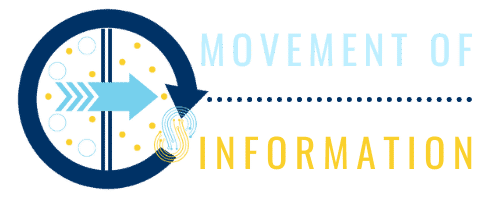Table of Contents
- Understanding the Basics of E/M Codes
- Recent Changes in E/M Coding Standards
- The Impact of E/M Code Changes on Billing Practices
- Best Practices for Navigating E/M Code Complexities
- Technology’s Role in Streamlining E/M Coding
- E/M Coding and Patient Care Coordination
- Legal and Ethical Considerations in E/M Coding
- The Global Perspective on E/M Coding Standards
- Looking Ahead: The Future of Evaluation and Management Coding
Key Takeaways
- The complex E/M coding system is vital for accurate healthcare billing and reimbursement.
- Recent changes to E/M codes are designed to streamline the billing process and place a higher emphasis on quality care over quantity.
- Adopting technology, especially AI and coding software, is changing the landscape of E/M coding practices.
- The future of E/M coding will likely involve further updates, necessitating ongoing education, and adaptability within the medical community.

Understanding the Basics of E/M Codes
The backbone of medical billing in the United States is constructed around CPT or Current Procedural Terminology codes, of which Evaluation and Management (E&M) codes are crucial. Established by the American Medical Association, these E&M codes are utilized to bill for most interactions between healthcare providers and patients. They encompass various aspects, from office visits and consultations to hospital care and home services. The E/M coding system is widely used by healthcare professionals, including nurse practitioners, clinical psychologists, and physical therapists, not just physicians. Its purpose is to accurately represent the complexity and nature of care provided, which helps to ensure appropriate reimbursement for healthcare services.
Recent Changes in E/M Coding Standards
At the start of 2021, significant changes were made to the E&M coding system, which is crucial for healthcare providers to submit reimbursement claims. These changes primarily affect office and outpatient visit E&M codes and aim to reduce the administrative burden on healthcare professionals. Before these changes, the documentation requirements resulted in significant paperwork, taking time away from patient care. The revised system simplifies the process by allowing healthcare professionals to choose the code level based on the total time spent on patient care during the encounter or the level of medical decision-making (MDM). This shift prioritizes the cognitive work involved in caring for patients over the number of tasks performed, which was the focus of the previous system. The impact of these changes is significant, affecting both the workflow within healthcare settings and the financial outcomes of these establishments.
The Impact of E/M Code Changes on Billing Practices
With the revised approach to E/M codes, the medical billing landscape is undergoing a significant transformation. Adjusting coding requirements means that healthcare providers must fine-tune their billing strategies to align with these, like billing professionals, who play a central role in ensuring that healthcare services are adequately compensated and aligned with compliance regulations. By fostering an environment that supports transparency and clarity in the billing process, healthcare providers can avoid the pitfalls of coding errors, which can lead to costly denials or delays in payments.
Best Practices for Navigating E/M Code Complexities
Billing professionals recommend several best practices to navigate the complexities of E&M coding effectively. First, healthcare practitioners and billing staff must be trained on the latest coding updates. This training should focus on understanding the nuances of medical decision-making and time-based coding. Furthermore, ongoing education and keeping up-to-date with periodic updates are continuing responsibilities. These programs incorporate the latest rules and guidelines, helping to prevent coding errors and facilitate a smoother billing process. Another best practice involves leveraging technology; many healthcare practices utilize specialized software solutions to select the appropriate E&M codes easily.
Technology’s Role in Streamlining E/M Coding
The introduction of sophisticated healthcare information technology has been a game-changer in E&M coding. Modern software systems offer numerous features, such as automation of code selection based on documented services, electronic health record (EHR) integration, and the ability to update code sets as new changes are implemented quickly. The most exciting development in the technology space is the potential application of artificial intelligence (AI). AI can analyze large data sets, identify patterns, and suggest appropriate codes for programming tasks using predictive algorithms. This can significantly reduce the manual workload on coding professionals and mitigate human error. Nonetheless, it is essential to acknowledge the irreplaceable role of human expertise in coding. AI and other technologies should serve as an adjunct to the knowledge and judgment of experienced coding personnel, ensuring an optimal balance between efficiency and accuracy.
E/M Coding and Patient Care Coordination
Adopting accurate E/M codes extends benefits beyond financial considerations; they are vital for patients’ care experience. By providing a standardized language for services rendered, E&M codes enable seamless communication and coordination of care across various health specialties and services. Accurate coding facilitates effective case management and the integration of care pathways, which leads to more personalized and coherent care delivery. Furthermore, clarity in billing fosters greater transparency, empowering patients to understand the services they receive and the associated costs, ultimately contributing to a more trustworthy healthcare environment.’
Legal and Ethical Considerations in E/M Coding
Amid the intricacies of E&M coding, professionals must navigate legal and ethical constraints. Compliance with regulations governing healthcare billing and coding is not just a legal matter but also an ethical one. Ethical coding practices promote fairness and integrity, avoiding upcoding—billing for a higher-level service than provided—or downcoding to avoid audit scrutiny. Both have legal implications and can undermine the trust between healthcare providers and their patients. Maintaining ethical standards also reinforces a culture of transparency and fosters the credibility of the healthcare institution.
The Global Perspective on E/M Coding Standards
Evaluating E/M coding practices globally reveals variations in how healthcare services are billed and reimbursed across different countries. Healthcare providers can glean innovative strategies and best practices by understanding international coding standards and practices. Moreover, global insights can better position healthcare professionals to serve patients from diverse backgrounds, particularly in regions with high medical tourism rates. International collaboration and knowledge exchange regarding E&M coding practices can enhance the overall medical billing and care standards worldwide.
Looking Ahead: The Future of Evaluation and Management Coding
The trajectory of E&M coding is set to continue evolving as the healthcare landscape shifts with advances in medical practices, telehealth, and digital record-keeping. It’s expected that updated codes will reflect these changes, ensuring that billing practices stay current with the realities of patient care. Healthcare providers and billing professionals should maintain a proactive approach to education and training to stay ahead of the curve. Anticipating and preparing for future updates will be vital to navigating the changes successfully, allowing for sustained high-quality care and efficient billing processes.








